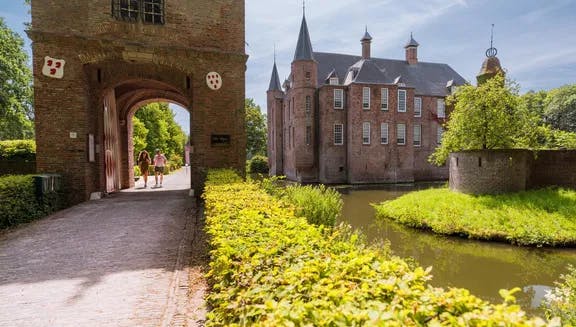
Fairytale villages to explore near Amsterdam
Old Holland
The watery idyll: Broek in Waterland

Arguably one of the Netherlands’ prettiest villages, Broek in Waterland is precisely what you might expect from a Dutch locale, filled with pastel-coloured wooden homes cut by canals, surrounded by fields and an almost Shire-like peace and quiet. But Broek in Waterland’s rural setting, belies its strong links with the Netherlands’ maritime past. In the 17th and 18th centuries, the village was the home of many successful ship owners, captains and merchants, and their wealth made it one of the most prosperous villages in the area. Nowadays, though, the village’s wooden houses – carefully restored and painted in authentic ‘Broeker’ grey – attract artists and creatives. The village is best explored on foot or by bike. But for something more magical, head to the water; the Bootverhuur Overleek rents out silent, electrically propelled ‘whisper boats’ to navigate the area to ensure you’re not disturbers of the peace, just citizens of it.
The fishing village: Monnickendam

The harbour town of Monnickendam is the beautiful home of dozens of monumental buildings as well as being a postcard picture of maritime life in Old Holland. In the 17th century, shipyards and fish smokehouses were established here and never left. Even now, the historic buildings and street names are reminiscent of its industrious past, when trades and crafts flourished. Today, the town’s relationship with the water is as strong, and sailing enthusiasts and anyone looking for a peaceful waterfront village flock here. Watch the boats launch from one of the many restaurants overlooking the marina as the bells chime from the Speeltoren, or end the day at one of the many cosy beach bars along the Gouwzee.
The island escape: Marken

As a former island-turned-village, Marken has an innate fairytale quality. Perhaps it’s the stretch of colourful homes built on stilts that line the waterfront or the fact you can only reach the village via a narrow path along one long dam. Either way, Marken has a pull and history to it, famed for the traditional costumes of its residents, and is said to be the most decorated in the Netherlands. Bike out in the sunshine and head to the Marker Museum for a roundup of the village’s history before making a beeline to the harbour for a snack on the water.
Tip: The Volendam-Marken Express ferry is included in the Iamsterdam City Card.
Castles & Gardens
The sleepy sibling: Muiden

Often overlooked, Muiden has quietly become a go-to afternoon getaway for Amsterdammers longing for a quick escape in the Castles & Gardens region. Easily reached by bike from Amsterdam-Oost, Muiden is famed for its castle – Muiderslot – but its city centre, divided by the River Vecht, is home to several time-tested brown bars and terraces that give it endless appeal when the sun’s out. And if the sun is out, catch locals jumping off Muiden’s central sluice into the River Vecht – or better yet, join in.
The fortress hideout: Naarden
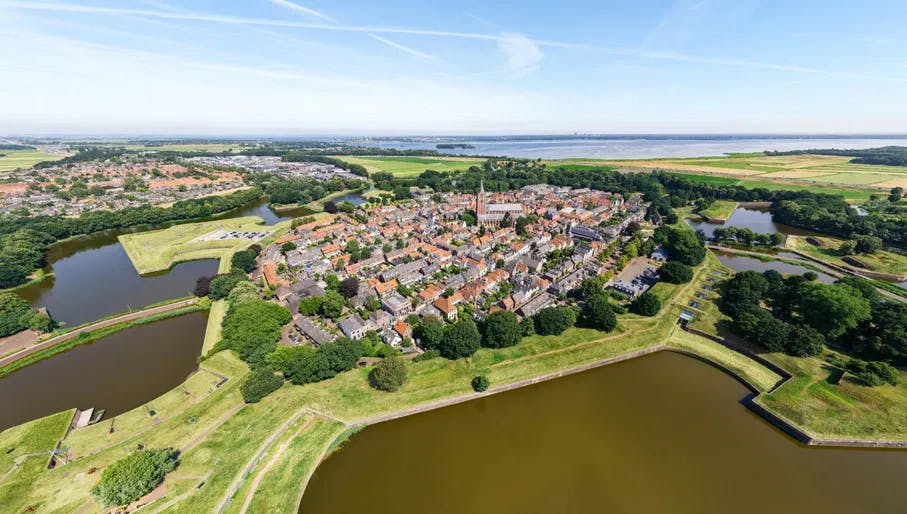
Stone walls, moats, labyrinthine streets – all these classic fortress town staples can be found towards Amsterdam’s east in Naarden. A town that has long drawn visitors due to its history and layout, when seen from the air, Naarden resembles a gigantic snowflake, which was why it was used as a rallying point for Allied bombers during World War II. Now, its military history is alive and well but in calmer form, thanks to the Dutch Fortress Museum, which plays host to Cannoneers Day, where visitors can watch cannoneers demonstrate the might of cannons. But if artillery isn’t your thing, the cobbled streets are home to cafés serving up beer and apple pie, while the town’s Grote Kerk is among the country’s oldest churches, meaning there’s peace even amid the town’s symbolic power.
The river town: Weesp

A 700-year-old fortified town, Weesp and its protected historical city centre is a honeycomb of cosy cafés, soaring church steeples and photogenic drawbridges. While technically part of Amsterdam, Weesp still feels like a lovely day trip, a snug riverside hideout that has a village feel but all the trappings of a town. Located in the heart of the Vechtstreek it’s famed for its historical buildings, Van Houten chocolate and jenever. Its rich architecture includes the spectacular Ossenmarkt and Issenmeer forts, a stunning interwoven canal network cut by seemingly endless amounts of pretty bridges – like the Groene Brug or Lange Vechtbrug – three historical windmills and several buildings that date back to the 17th and 18th centuries. Wander through the centre to Weesp’s former town hall – a stately, neoclassical building – which now houses the Museum Weesp, the municipal museum devoted mainly to 18th-century porcelain crafts. Peruse the collections here before stopping for lunch at the bright yet cosy De Eendracht restaurant, a sunlit living-room-style restaurant that captures Weesp’s quiet appeal.
Haarlem
The medieval market: Haarlem’s central district

While technically classed as a city, Haarlem hits all the marks of the fairytale town playbook, and once upon a time, it was just that. A prosperous shipping town and hub for beer and tulips, Haarlem’s wealth attracted many a traveller to its pretty streets which remain as attractive today. A labyrinth of cobblestones, duck beneath leafy trellises and wander down alleys strung with fairy lights at every turn, and you’ll find that Haarlem’s appeal lies in its ability to make time stand still. Market squares, sleepy cafés, church steeples and streets lined with flowers all contribute to Haarlem’s timeless feel. Head here for a day and revel in the city’s shopping options and its notable history – courtesy of the Frans Hals Museum or Teylers – before settling for dinner on Korte Houtstraat at fondue restaurant In ‘T Goede Huur, one of the city’s most gorgeous but overlooked spots.
Amsterdam Beach
The rugged outpost: IJmuiden

A seafaring port town with a proud nautical history, IJmuiden is a bit like Amsterdam’s answer to the Iron Islands in Game of Thrones; out west, rugged and somewhere you’ll find plenty of fish. Home to forts and a thronging harbour, the pinnacle of its salty nature comes to life in the summer at the Harbour Festival IJmond, a nautical-themed event of music, entertainment and food that celebrates what makes IJmuiden so distinct. Of course, it has an appeal all year round – visit its namesake island fortress, and you’ll start to see the Iron Island reference or wander the sandy shores dotted with beach huts, and you might get a taste of those fairytale harbour towns of old – even in Amsterdam Beach.
Flowers of Amsterdam
The flower town: Lisse

Lisse might seem like an ordinary village at first glance, but its appeal lies in the fact that it’s home to the world’s most extensive flower garden, Keukenhof. Famed worldwide for its colourful tulip fields, this botanical garden on Lisse’s western side comes alive in the spring, turning a quiet village into a vision of floral wonder. Stroll through the gardens of the Keukenhof before making your way towards the 17th-century Keukenhof Castle and then into Lisse, where the Museum De Zwarte Tulp awaits. Lisse is surrounded by several meandering, flower-filled paths, too, so it’s worth renting a bike and seeing why Lisse has been dubbed ‘the flower town’ of the region.
New Land
The makers' village: Batavialand
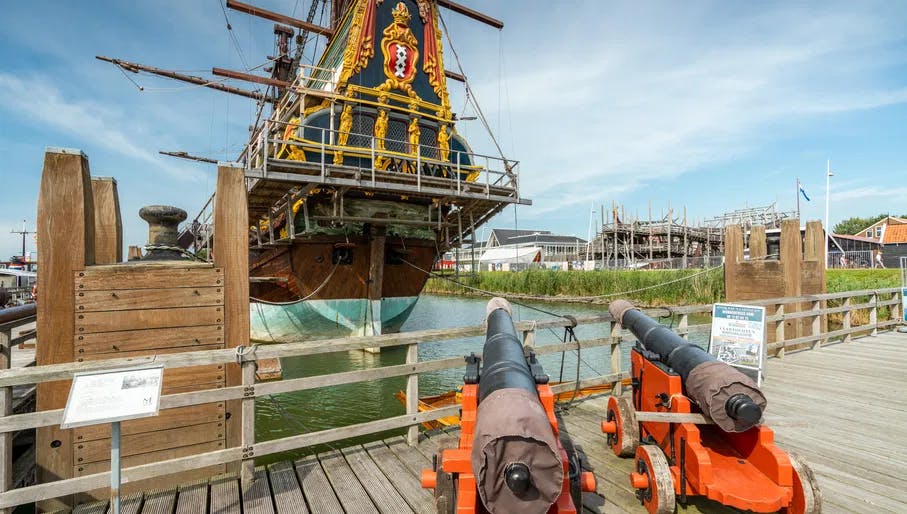
Not a “village” but a place where magic lingers nonetheless, Batavialand and its shipyard of makers wield a certain power over all its visitors. Located near the Bataviastad shopping district in New Land, Batavialand is a museum with a village feel. Here, master craftsmen work together on the restoration of a massive ship, meaning you can walk through and watch demonstrations of everything, from carpentry to ironwork and more. There’s something about the industry here that might appeal to anyone who loves the lore of the dwarves under the mountain, so indulge in age-old techniques and the bustling atmosphere and imagine yourself in Middle Earth for a moment.
Related articles
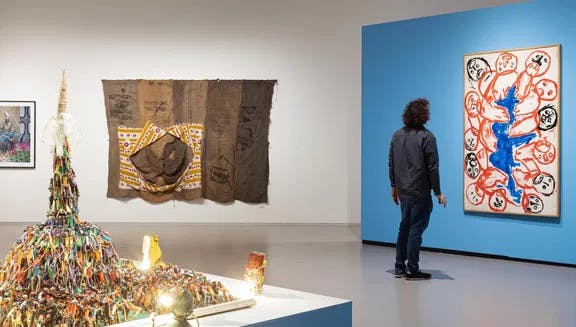
Art and exhibitions in the Amsterdam Area
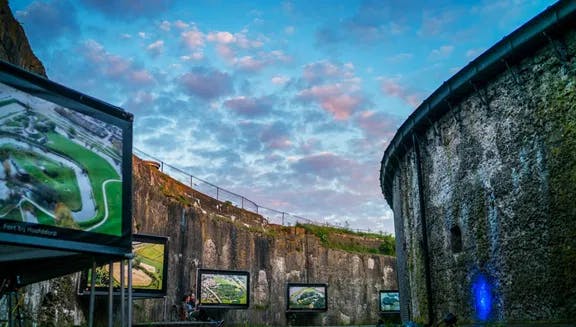
Fantastic forts and where to find them around Amsterdam
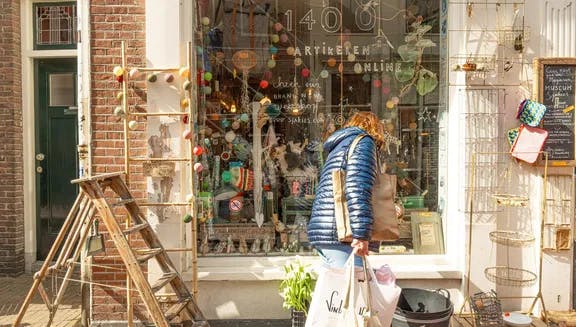
Shopping and markets in the Amsterdam Area
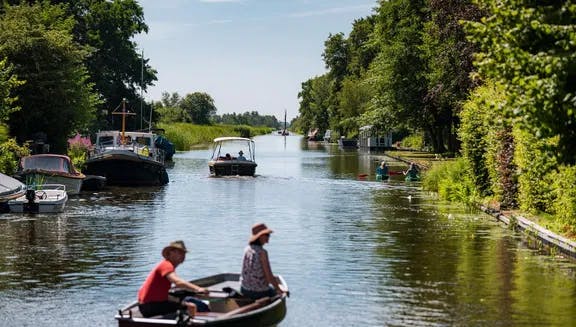
Unmissable day trips from Amsterdam
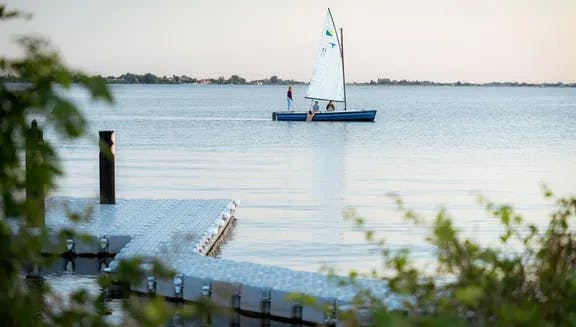
Best spots for boating and sailing around Amsterdam
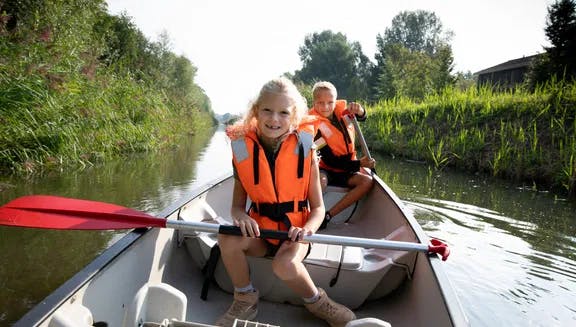
Unique things to do with kids in the Amsterdam Area

Best botanical gardens to visit in the Amsterdam Area

Best water views in the Amsterdam Area
